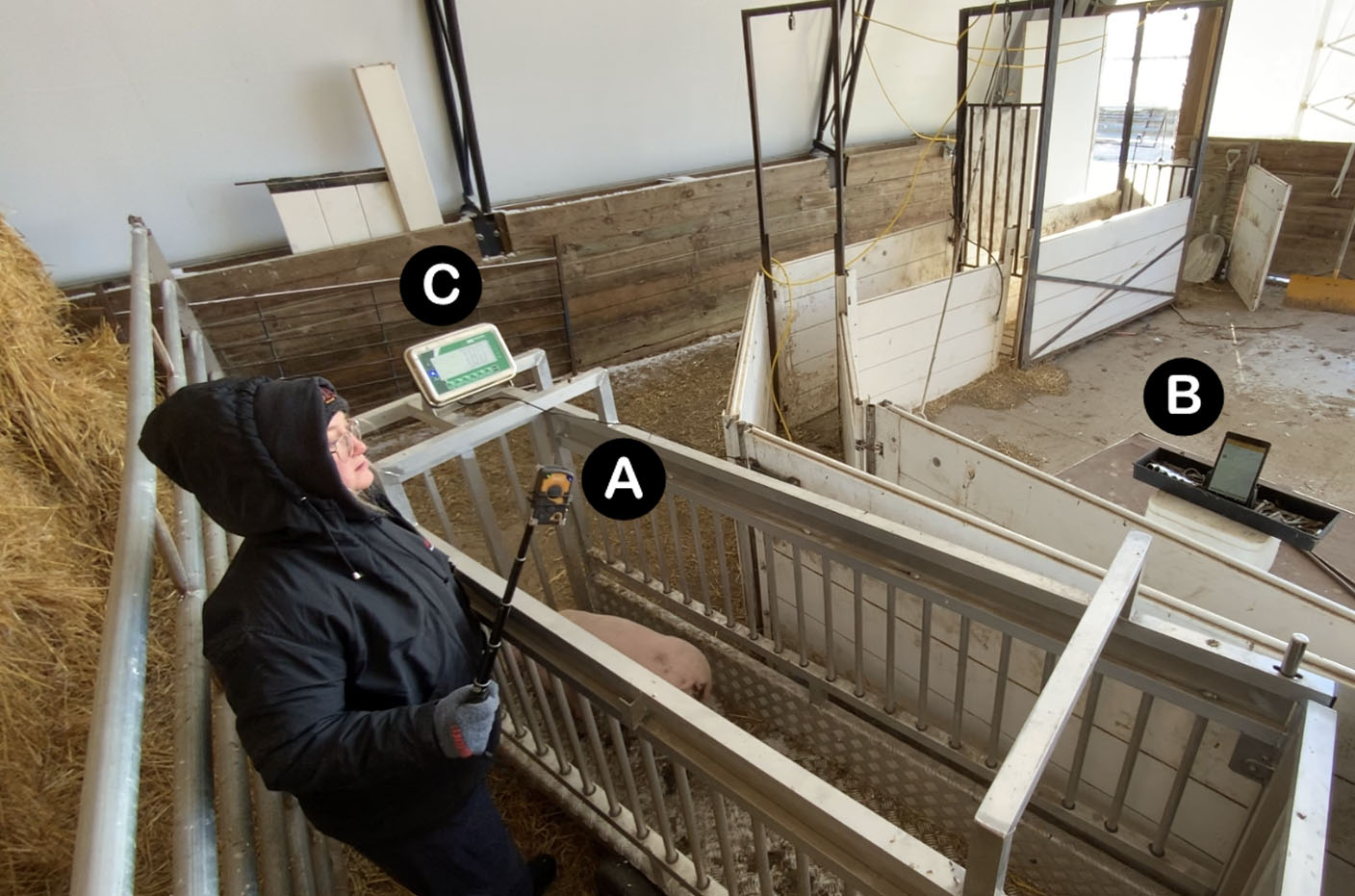January 2023
By Lee Johnston, Yuzhi Li, Gabriella Lima, and Megan Kavanagh
Since 1910, swine research has been conducted that the West Central Research and Outreach Center. For the last 112 years, researchers have identified pigs with ear notches or ear tags and used those ID’s to record information about individual pigs. Researchers would determine the identity of the pig, write that ID on a sheet of paper and also write the data point(s) of interest such as body weight or litter size or parentage to name a few. Researchers were constantly on the lookout for errors such as reading an ear notch or ear tag incorrectly, writing the wrong weight and messy writing. Data collected on these “barn sheets” were used to hand-calculate various performance measures such as average daily weight gain. In the early 1980’s when desktop computers became commonplace and affordable, data from barn sheets were hand-entered into spreadsheet programs so that performance measures could be calculated very quickly and more accurately than hand calculations. However, there was still potential for errors when data were entered manually in the computer. For the past 30+ years, this hybrid of barn sheets and computers has been the norm for WCROC swine research.
In 2022, the WCROC swine research program moved to the next level of sophistication and precision. With funding from the USDA’s Organic Agriculture Research and Extension Initiatives (OREI) program, we purchased the LeeO electronic pig ID system. The system was developed in the Netherlands and is marketed in the U.S. by PrairiE Systems of Spencer, IA. The system consists of an Ultra High Frequency (UHF) tag placed in the pig’s ear, an electronic reader about the size of a deck of playing cards, a livestock scale equipped with a Bluetooth-enabled electronic indicator, and a tablet computer. To use the system, a pig enters the scale and the researcher passes the reader (A) within 12 inches of the pig’s ear tag. The reader identifies the pig’s number and transmits that information to the tablet computer (B) while the scale is weighing the pig. Once the scale indicator (C) has “locked on” a stable weight for the pig, it sends the body weight to the tablet. The tablet matches the pig ID with the body weight and stores that information together. This process is repeated until all the pigs from multiple pens are weighed. When the work session in the barn is complete, the tablet is taken back to the office where it automatically uploads all the new information to the Cloud for long term storage. Once in the cloud, researchers are able to download the data from anywhere in the world to spreadsheets or other software for further analysis.
Advantages of this new system are many. Speed of weighing pigs has increased tremendously. We can weigh pigs and record data about as fast as we can move individual pigs through the scale. Identification of individual pigs is easy, fast, and accurate. This is especially helpful in the hoop barns where ear tags often cannot be read visually because of mud or manure on the tag. Retention of ear tags is very good. In one of our previous studies using LeeO with suckling pigs, 99.4% of ear tags remained in place from birth through 21 days of age. In a recent finishing pig experiment that lasted 110 days, only one pig out of 100 pigs lost a tag. Of course, there are some drawbacks with this system. The learning curve for using LeeO is very steep. Adrienne Hilbrands, WCROC Assistant Scientist, worked with LeeO staff to “set up” our farm on the system and figured out all the system nuances to get things running smoothly. We are and will continue to learn all the capabilities of the system. Now we are totally reliant on the system for capturing data once LeeO is put into use for an experiment. If one component fails, we have no viable, efficient alternative to capture pig weights. Each UHF tag carries a number but that number is exceedingly small and very difficult to read when attached to a pig’s ear.
We are excited about the new capabilities of our data collection system. As farmers and their advisors increasingly adopt new technologies on the path to more precise agriculture, we can share our experiences with them. These precision agriculture systems will help farmers track pigs through the production and supply chains as a way to document to consumers where and how their pork was produced.
The LeeO system has great utility in capturing sow performance data. Incorporating LeeO into our sow herd is the next step for application of this technology. We look forward to learning all the capabilities of this new system as we delve deeper into precision technologies for livestock production. We intend to share our experiences with other researchers and farmers in the future.
This project is supported by the Organic Agriculture Research and Extension Initiatives (OREI) of the USDA National Institute of Food and Agriculture (NIFA).

